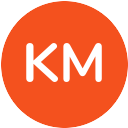7 Alternatives to Asana for Project Management and Collaboration
By Gregor K. published about 2023-02-03 00:10:42
Are you looking for a great alternative to Asana? Look no further! In this article, we will be taking a look at some of the best sites like Asana that offer similar features. From project tracking and team collaboration tools to task management and productivity tools, these sites provide everything you need to stay organized and on track. We'll also be discussing the pros and cons of each option, so you can make the best decision for you and your team. So let's dive in and explore the best sites like Asana!
Asana
Asana is a leading work management platform that helps teams manage their projects and tasks, collaborate with their colleagues, and track their progress. With Asana, teams can organize their work, break down complex projects, assign tasks, set deadlines, and share files. Asana provides visibility and accountability for teams to stay on track and achieve their goals.
Features
- Project management – create and manage projects and tasks, assign deadlines, and track progress
- Collaboration – share files, comment on tasks, and discuss progress
- Teamwork – organize work and assign tasks to team members
- Automation – set up rules and automations to streamline workflows
Table of Contents
- 1Introduction
- 2Asana Alternatives
-
3Head-to-Head Comparisons
- 3.1Asana vs Airtable
- 3.2Asana vs Amazon
- 3.3Asana vs ClickUp
- 3.4Asana vs Evernote
- 3.5Asana vs Microsoft Excel
- 3.6Asana vs Figma
- 3.7Asana vs Keep
- 3.8Asana vs GitHub
- 3.9Asana vs Member
- 3.10Asana vs HoneyBook
- 3.11Asana vs HubSpot
- 3.12Asana vs Infinity
- 3.13Asana vs Jira
- 3.14Asana vs Notion
- 3.15Asana vs Noom
- 3.16Asana vs OneNote
- 3.17Asana vs Microsoft Outlook
- 3.18Asana vs Obsidian
- 3.19Asana vs Planner
- 3.20Asana vs Project
- 4Asana History
- 5Asana Status
- 6Comments
- 7Further Links
Asana Alternatives
Trello
Visual boards, task management, team collaboration, task organization
Trello is more task-centric, Asana has more project-oriented features
Basecamp
Group collaboration, task management, project organization
Basecamp is more focused on communication, Asana is better for task management
Wrike
Task organization, team collaboration, project management
Wrike is more focused on reporting and analytics, Asana has more task-oriented features
Monday
Team collaboration, task organization, project management
Monday.com is more visually-oriented, Asana is better for task management
Jira
Task organization, project management, team collaboration
JIRA is more developer-oriented, Asana is better for project organization
Proofhub
Task organization, team collaboration, project management
ProofHub is more focused on proofing and QA, Asana is better for task management
Workfront
Team collaboration, task organization, project management
Workfront is more focused on resource management, Asana is better for task management
Airtable
Both Asana and Airtable are productivity tools that help teams manage tasks and streamline their workflows.
Asana is a project management tool while Airtable is a spreadsheet-database hybrid designed for collaboration.
Amazon
Both Asana and Amazon offer user-friendly websites for customers to navigate.
Asana is designed to help organizations manage tasks and projects, while Amazon is a retail website for customers to purchase items.
ClickUp
Both Asana and ClickUp provide project management tools that help users organize and manage tasks.
Asana uses a Kanban-style board while ClickUp has a tree-like structure to its organization system.
Evernote
Both Asana and Evernote help users manage their tasks and projects.
Asana is designed for team collaboration, while Evernote is designed for storing and organizing individual notes.
Microsoft Excel
Both Asana and Microsoft Excel are used for task management.
Asana is a cloud-based project management software while Microsoft Excel is a spreadsheet program.
Figma
Both Asana and Figma are web-based software solutions for managing projects.
Asana is a project management platform while Figma is a design collaboration tool.
Keep
Both websites are task management tools used to help manage and organize tasks.
Asana is a more robust project management tool while Keep is more suitable for basic task management and note taking.
Asana Head-To-Head
Asana is a popular collaboration and project management tool with many features to help you manage your projects. It is designed for teams of all sizes, from small startups to large organizations. In this head-to-head comparison, we'll look at how Asana compares to other websites in terms of features and usability. We'll examine how it stacks up against competitors like Trello, Wrike, and monday.com in areas such as project management capabilities, task tracking options, communication tools, and automation features. We'll also consider the support options available and discuss pricing plans for each website. With this side-by-side comparison, you can decide which platform best meets your needs and budget.
Both Asana and Airtable are popular project management platforms used by teams around the world. Asana is a task-oriented platform that offers project organization, tracking, and collaboration tools. It allows users to assign tasks, track progress, set deadlines, and communicate with team members. Airtable is also a project management platform which blends the features of spreadsheets and databases for easy data visualization. Airtable provides customizable templates for tracking tasks and managing projects, along with powerful automation capabilities. Both platforms offer integration with other services such as Slack, Dropbox and Google Calendar to further support project collaboration. However, the primary difference between them lies in their different approaches: Asana focuses more on task-based organization while Airtable takes a more spreadsheet-focused approach to organizing data. Depending on the needs of your team, either platform can be an excellent choice for managing projects.
. Asana and Amazon are both online platforms that offer services for organizations to help manage their workflows. Asana is a project management tool designed to help teams collaborate and plan projects, while Amazon is an e-commerce platform that enables organizations to purchase products and services. Asana provides features such as task management, team collaboration, project planning tools, and communication tools. It also offers integrations with other popular applications like Slack, Google Drive, Dropbox and Outlook. With its intuitive user interface, it allows users to easily create tasks, assign them to team members and monitor progress. Amazon offers a wide range of products and services along with payment processing capabilities. It also provides search capabilities to enable customers to find the items they need quickly. Additionally, Amazon offers analytics on customer purchases so businesses can track sales trends over time. Overall, Asana is a great tool for managing projects and teams while Amazon is an excellent platform for purchasing products or services online. Both platforms provide helpful features for businesses but cater to different needs.
Asana and ClickUp are both project management tools that help teams stay organized and track tasks. Asana is a web-based platform that allows users to create projects, assign tasks, comment on progress, set deadlines, and track time. It also provides a dashboard view of each project with an overview of tasks and progress towards completion. ClickUp is a cloud-based platform that offers similar features but also provides real-time collaboration with online document editing capabilities. Both platforms have the ability to assign tasks to team members and set deadlines, but ClickUp has significantly more customization options than Asana, allowing users to customize the look of their workspaces as they wish. In addition, ClickUp offers powerful workflow automation tools that allow users to automate routine tasks across teams. Asana has fewer automation features but does offer apps for iOS and Android devices for on-the-go task tracking. Both services also offer reporting capabilities so users can gain insights into how their projects are progressing over time.
Asana and Evernote are both popular tools used for task and project management. However, they each have unique features that make them best suited to different types of users. Asana is designed for teams who need to collaborate on tasks and projects in real-time. It offers a variety of features such as task boards, timelines, reminders, subtasks, Gantt charts and more. It also offers an app that allows users to stay connected and up-to-date on tasks while on the go. Evernote is designed for individuals who need to keep track of ideas and notes. It offers an intuitive note taking experience with support for text, images, audio recordings, webpages and more. It also allows users to sync their data across multiple devices so they can access it anytime from any device. Both Asana and Evernote offer great features but are tailored towards different kinds of users - those looking for team collaboration should look towards Asana whereas individuals looking for a personal note taking app should check out Evernote.
Asana and Microsoft Excel are both powerful tools that enable users to organize their work and collaborate with others. Both tools are designed to help users achieve their goals efficiently, but they differ in terms of features and functionality. Asana is a web-based project management tool that allows users to plan, track, and collaborate on projects with teammates. It enables users to create tasks, assign them to specific team members, set deadlines, discuss tasks in real time via comments, chat or video conferencing, attach files and documents, add attachments from external services such as Dropbox or Google Drive, set reminders for tasks and much more. Microsoft Excel is a spreadsheet program used for data analysis and calculations. It provides users with a wide range of data manipulation capabilities including sorting, filtering, charting and graphing data. Users can also write formulas to process data automatically. Unlike Asana which is primarily focused on project management, Excel can be used for many other purposes such as financial report creation or budget tracking. In summary, Asana is suited for managing projects while Excel is better suited for manipulating large amounts of data.
Asana and Figma are both web-based project management tools, each ideal for different types of projects. Asana is focused on helping teams organize and communicate their efforts, while Figma is designed to help teams collaborate on designs. Asana offers an intuitive user interface with powerful task-management features, allowing users to assign tasks to team members, set due dates, add comments, and track progress. Additionally, it provides integration options for third-party applications such as Slack, Salesforce, Dropbox etc. Figma is a design collaboration platform that enables teams to easily share and discuss their designs in real time. It has all the basic design editing functions such as shapes and text boxes but also allows users to add transitions, animations and interactions. Itâs integrated with popular design tools such as Adobe XD and Sketch so users can easily import their existing designs or use templates provided by Figma. It also supports live presentations so teams can quickly review each otherâs work.
Asana and Google Keep are both project management and task-tracking tools designed to help people stay organized and on track with their work. Asana is a comprehensive, collaborative project management tool that focuses on tasks, projects, and conversations. It provides users with a central hub to keep track of tasks, create new ones, collaborate with team members, and have discussions. Asana offers many features such as the ability to assign tasks to multiple people at once, add due dates and subtasks, organize tasks into projects or categories, view tasks in Kanban boards or calendar view, create custom fields for extra information about each task, integrate with other apps such as Dropbox and Slack for collaboration purposes, use powerful search functionality for quickly finding specific pieces of information within your workspace, add tags to tasks for easier sorting later on. Asana also allows users to set goals and measure progress towards completion. Google Keep is a note taking app that offers easy organization of thoughts and ideas. It includes features like the ability to create notes with text or images, archive old notes easily so they donât take up space in your feed constantly anymore; color-code notes and labels; share notes with other Google account users; convert voice memos into written notes (if you are using the Android version); set reminders so you donât miss any deadlines; and access all your data from anywhere using the web version of the app. Google Keep does not offer project management features like Asana does but it is an efficient way for taking quick notes or setting reminders without having to switch between apps.
Asana and GitHub are two popular tools used for task management and collaboration. Asana is a web-based productivity platform that allows teams to organize, track, and manage their workflows. It provides a visual project timeline with features like checklists, due dates, and comments. Asana also includes advanced features like automation, templates, reminders, and conversations. GitHub is an online version control system that enables developers to collaborate on code. It allows developers to store projects in one place and make changes collaboratively. GitHub also has advanced features such as branching, pull requests, code review, issue tracking and more. Both platforms offer integration with other applications such as Slack and Zoom as well as mobile apps for iOS and Android devices. Overall, both Asana and GitHub offer powerful tools for managing tasks and collaborating with your team however they both have different use cases. Asana is great for visual project timelines while GitHub is better suited for development projects.
Asana and Member are cloud-based project management and collaboration tools designed to help teams stay organized and productive. Both platforms allow users to create tasks, comment on tasks, assign tasks to team members, set due dates and deadlines, add attachments, and track progress. When it comes to features, Asana offers a wide range of tools for task management with Gantt charts, Kanban boards, calendar views, custom fields, integrations with other apps like Slack and Dropbox, resource scheduling, time tracking capabilities and more. Member has a basic set of features that include task creation, assigning tasks to team members, setting due dates/deadlines and adding attachments. It lacks the Gantt charts and advanced integrations that Asana offers. The two platforms offer different levels of collaboration capabilities as well. Asana provides users with the ability to comment on tasks within a single thread or multiple threads for larger conversations about a task or project. It also allows users to tag people in comments so that they can be notified when there is an update or discussion about one of their assigned tasks. Member offers basic commenting options but does not provide the same level of threaded conversations or tagging capabilities as Asana does. Ultimately both platforms offer great solutions for task management but if you are looking for more advanced features such as Gantt charts or extensive integration options then you may want to go with Asana instead of Member.
Asana and HoneyBook are two of the most popular project management and client relationship management tools on the market. Both offer a suite of features to help businesses manage their projects, tasks, clients, and workflows more efficiently. Asana is a robust project management platform that enables users to organize tasks and projects into boards, lists, and timelines. It also provides advanced collaboration features such as group chat, file sharing, task dependencies, and integration with other applications like Slack and Dropbox. Asana is well suited for managing large teams with complex projects. HoneyBook is a comprehensive CRM that includes features such as contact management, proposal creation, invoicing, calendar booking, automated payment reminders, and online contracts. It is great for solo business owners who need an all-in-one platform to manage their client relationships from end-to-end. HoneyBook also offers integration with many popular applications like Zoom and MailChimp.
Asana and HubSpot are two popular task management and CRM software platforms. Asana is a project management tool that helps teams organize projects, track progress, and collaborate with each other. It offers features such as task boards, task lists, project timelines, Kanban boards, calendar views, and more. HubSpot is a customer relationship management (CRM) platform that helps businesses manage customer relationships and sales pipelines. It features contact management, lead scoring, email marketing automation, website tracking and analytics, live chat capabilities, and more. Both Asana and HubSpot offer intuitive user interfaces with customizable options for organizing workflows in various ways to suit different teamâs needs. Asana offers additional capabilities such as custom templates for projects or tasks and integrations with third-party software like Slack or Google Drive. On the other hand, HubSpot provides advanced customer segmentation tools such as predictive lead scoring to help businesses effectively target leads based on their interests or behaviour. Additionally, HubSpot allows users to easily create automated workflows through its drag-and-drop builder without any coding required.
Asana and Infinity are both project management tools that allow teams to collaborate on a variety of tasks. Asana is a web-based platform that helps teams manage projects and track progress in real time. It features task lists, subtasks, and calendar views for tracking deadlines, along with project boards for better visualizing tasks and progress. Asana also offers a range of integrations with other popular applications such as Google Drive and Slack. Infinity is an all-in-one task management solution that helps teams create projects, set goals, assign tasks, and monitor progress in one place. It has a customizable dashboard that lets users view the big picture of their project and adjust plans easily. Teams can also use Infinity to collaborate on tasks in real time with its chat feature, which allows them to discuss ideas and get feedback instantly. Infinity also offers integration with other popular applications such as Salesforce and Dropbox.
Asana and Jira are both project management tools used by teams to collaborate and track progress. Asana is a user-friendly tool that streamlines tasks for teams, while Jira provides advanced tracking capabilities and integration options. Asana's main features include task organization, collaboration, and visual timeline views. Users can also upload files, set due dates, create templates for recurring tasks, assign tasks to team members, view notifications in an activity feed, and attach comments to tasks. In addition to managing projects at a high level with Boards view, Asana also offers Gantt Charts for project planning. Jira's main features include issue tracking and workflow automation. It allows users to create issues with customizable fields such as priority level, assignees, labels, and more. It has robust reporting capabilities which allow users to quickly gain insights into the progress of their projects. Additionally, it offers integration options with third-party services such as Slack and Google Drive.
Asana and Notion are both project management tools designed to help teams coordinate their work. Asana is designed to track tasks and projects, while Notion is built to organize documents, databases, wikis, and more. Asana allows users to assign tasks to different team members, set due dates, add comments and attachments, create custom fields for tracking progress on tasks, and view task lists in Kanban boards or Gantt Charts. It also has a Calendar view for easy scheduling of tasks. Notion is an all-in-one workspace with a wide range of features including document collaboration, task management, calendars and scheduling tools. It enables users to manage their work in an organized way by creating pages for each project or topic area with embedded tasks and other content like notes or images. It also offers advanced features such as data tables where multiple users can collaborate on entries at the same time. Additionally, Notion has a powerful search feature which makes it easy to find what youâre looking for quickly.
Asana and Noom are two popular productivity tools that both offer users the ability to organize tasks, set goals, and track progress. However, they have some distinct features that set them apart from each other. Asana is a task-management platform that offers an intuitive user interface which makes it easy to manage projects, plan events and track milestones. It also provides powerful collaboration tools for teams to communicate and stay in sync with each other. Asana also offers extensive integrations with third-party services such as Gmail and Google Drive, making it easier to manage projects across multiple platforms. Noom is a goal-setting app that helps users track their progress towards specific goals. It offers personalized coaching sessions, detailed analytics, and interactive content tailored to individual needs. Users can set daily goals and habit reminders that help them stay motivated and on track with their progress. Additionally, Noom provides an online community where users can interact with others who are working towards similar goals as well as share insights into their successes or challenges.
Asana is a collaborative workspace for teams to organize and manage their projects, tasks, conversations and documents. It provides project boards, task lists, Gantt charts, conversations, calendars and file sharing tools to help teams stay organized. Asana also has mobile apps for Android and iOS devices that let users access their workspaces from anywhere. OneNote is a digital notebook app from Microsoft that helps users capture ideas, store information and collaborate with others. It allows users to insert images, videos and other media into notes. OneNote also has a cloud synchronization feature which keeps all notes in sync across devices as well as powerful search features which allow users to find information quickly. OneNote also supports collaboration through shared notebooks where multiple people can work on the same document simultaneously.
Asana and Microsoft Outlook are both web-based programs designed to help manage projects, tasks, and teams. Asana is a project management platform that allows users to plan, organize, and collaborate on projects with their team. It features visual boards, progress tracking tools, dedicated spaces for conversations related to projects, customizable workflows, and multiple integration options. Microsoft Outlook is an email client that also has task management capabilities integrated into it. It allows users to organize emails by priority and category, track tasks with an auto-updating calendar view, schedule meetings with other teams or individuals, set up reminders for important messages or tasks and quickly access all of your accounts in one place. Both Asana and Microsoft Outlook offer a variety of features for managing projects and tasks but differ in terms of the specific set of tools they provide. While Asana is specifically designed for project management purposes with its custom workflows and collaboration tools, Microsoft Outlook provides more general task management functionality along with its primary purpose as an email client.
Asana and Obsidian are both popular project management tools for teams. Asana is a collaboration platform that helps users organize their work, track its progress, and receive updates from team members. It offers a variety of features such as task lists, conversations, Gantt charts, calendars, document sharing, advanced search capabilities and custom fields to help teams stay organized and efficient. Obsidian is a knowledge-management tool designed to help users capture ideas, structure their thoughts, and develop better understanding of complex topics. It provides advanced search capabilities for finding related notes quickly, personalized note links for easy navigation between notes, visual connections between notes to create relationships between them and external files integration to connect notes with other tools. Both Asana and Obsidian can be used together or separately depending on the userâs needs.
Asana and Planner are both project management tools designed to help teams keep track of their tasks and stay organized. Asana is a more comprehensive tool that helps users manage projects, store files, and collaborate with teammates. It offers customizable fields so users can tailor the software to fit their needs, as well as Gantt charts to monitor progress and timelines. With Asana, users can also add tags to tasks, set due dates, assign tasks to team members, comment on tasks, and use notifications to stay updated. Planner is a simpler project management tool that uses boards and buckets to organize tasks into different categories. It allows users to assign tasks with notes or files attached and view task details in one place. Planner also offers built-in collaboration features such as group chat for discussing projects, task comments for easy feedback exchange, and file sharing for attaching documents and images directly from OneDrive or SharePoint. However, it does not have some of the features available on Asana like Gantt charts or customizable fields.
Asana and Project are two popular project management tools used to coordinate and manage tasks, projects, and timelines. Both platforms provide users with the ability to assign tasks, add due dates, attach files, communicate in team chats and more. Asana offers users a range of views for task organization including list view, board view (similar to Trello), calendar view, and timeline view. Asana also includes automated workflows that allow task owners to set up multiple statuses for each stage of a task. Additionally, Asana provides custom fields such as checkboxes and drop-down menus that can be used to organize tasks even further. Project is designed around its Gantt chart feature which provides users with an easy way to visually see the progress of their projects over time. Tasks can be assigned or rescheduled directly within the chart. Project also offers resource and cost tracking which allows users to keep track of resources allocated to each project as well as costs associated with them. It also includes real-time collaboration capabilities such as @mentions for instant communication between team members and file sharing.
History of Asana
Asana is a website that was founded in 2008 as a way to help teams track their work and stay organized. It has grown since then to become a powerful tool for managing projects and tasks, with over 50 million users in over 190 countries around the world. The website was created with the goal of helping people manage their work efficiently and effectively, and it has since become one of the leading project management platforms.
Asana Status
The Asana website on online and reachable (last checked on 2025-07-05 01:00:06).
Comments
-

I'm excited to try all these websites out, but I think I'll start with Asana first!
2023-02-20 20:01:22 · -

-

-

-

-

-

I'm looking for a website to help me with my to-do lists, so this is perfect!
2024-02-27 02:38:16 · -

There's finally a website to help me with all the tasks I have to do...asanas!
2024-05-09 04:04:58 · -

-

I'm not sure if they're the best websites, but at least they have creative names.
2024-08-05 12:07:39 ·
Further Links
Trending Sites
Top Sites in Productivity
Asana
Asana is a leading work management platform that helps teams manage their projects and tasks, collaborate with their colleagues, and track their progress. With Asana, teams can organize their work, break down complex projects, assign tasks, set deadlines, and share files. Asana provides visibility and accountability for teams to stay on track and achieve their goals.
Features
- Project management – create and manage projects and tasks, assign deadlines, and track progress
- Collaboration – share files, comment on tasks, and discuss progress
- Teamwork – organize work and assign tasks to team members
- Automation – set up rules and automations to streamline workflows
Table of Contents
- 1Introduction
- 2Asana Alternatives
-
3Head-to-Head Comparisons
- 3.1Asana vs Airtable
- 3.2Asana vs Amazon
- 3.3Asana vs ClickUp
- 3.4Asana vs Evernote
- 3.5Asana vs Microsoft Excel
- 3.6Asana vs Figma
- 3.7Asana vs Keep
- 3.8Asana vs GitHub
- 3.9Asana vs Member
- 3.10Asana vs HoneyBook
- 3.11Asana vs HubSpot
- 3.12Asana vs Infinity
- 3.13Asana vs Jira
- 3.14Asana vs Notion
- 3.15Asana vs Noom
- 3.16Asana vs OneNote
- 3.17Asana vs Microsoft Outlook
- 3.18Asana vs Obsidian
- 3.19Asana vs Planner
- 3.20Asana vs Project
- 4Asana History
- 5Asana Status
- 6Comments
- 7Further Links
